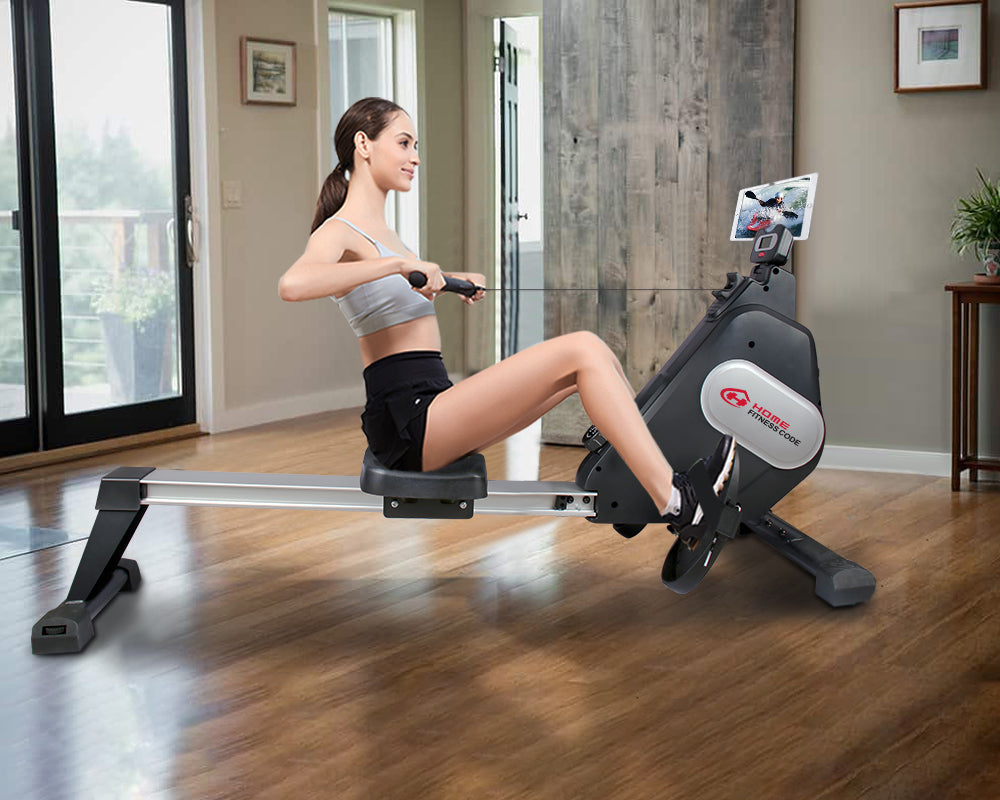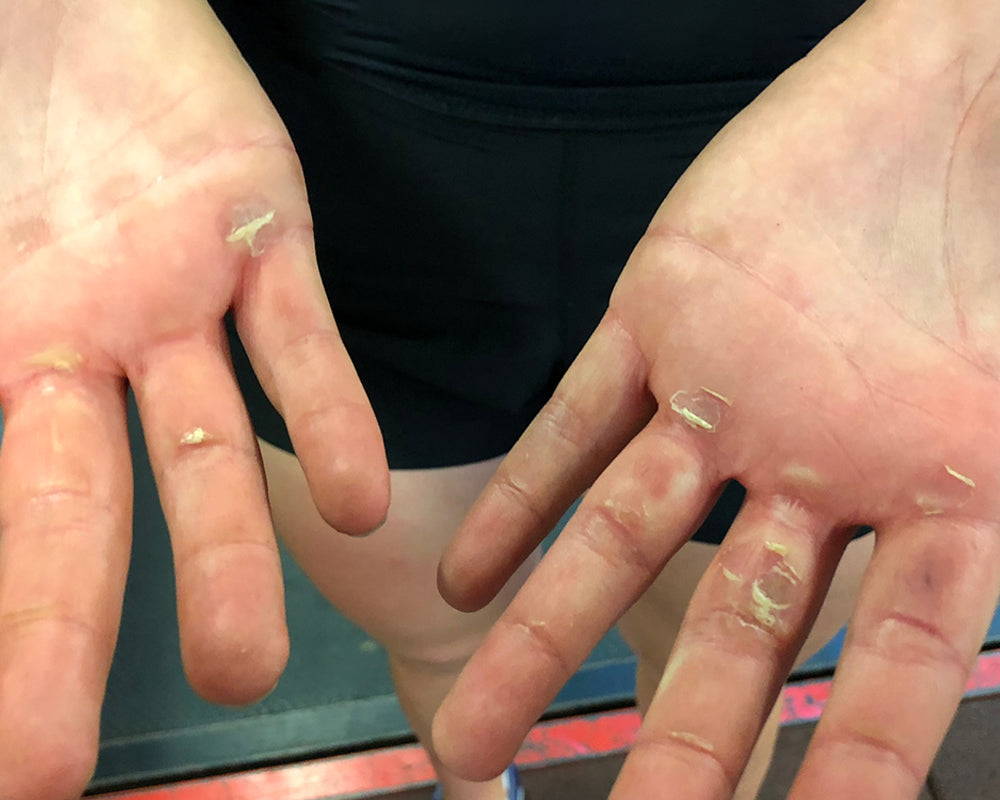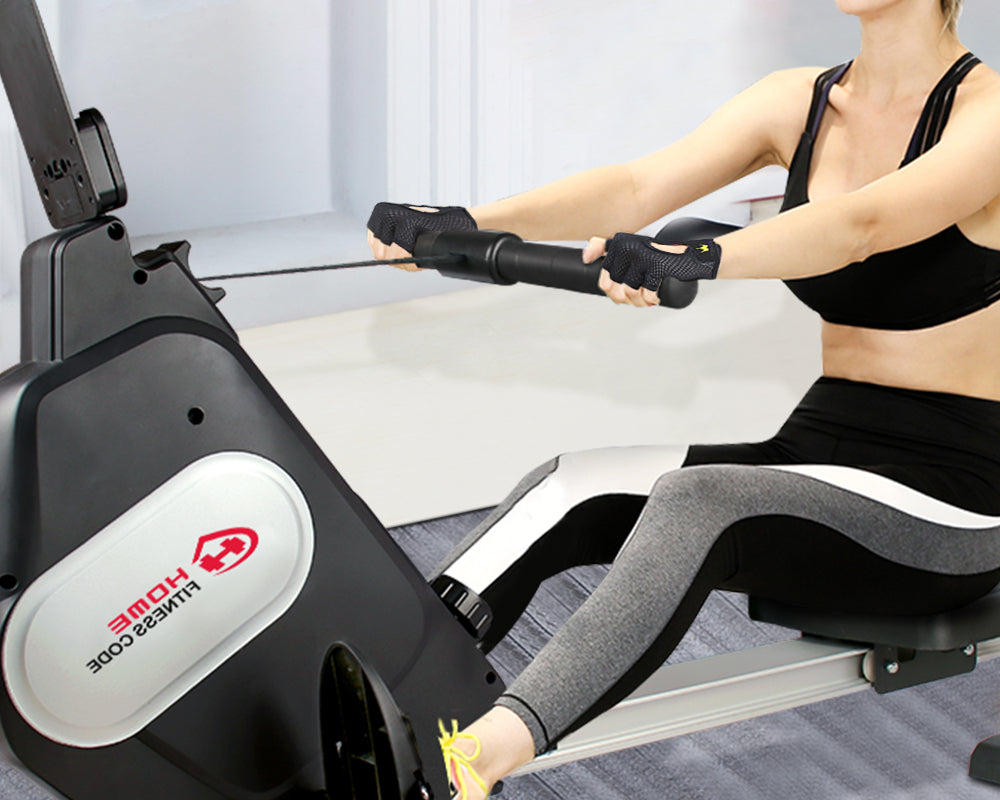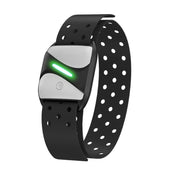With the gradual acceleration of the pace of urban life, people are getting busier and busier. A busy work schedule can lead to an irregular lifestyle, so as a result, more and more people are becoming unhealthy or obese, and you are probably one of them. Then, in order to keep healthy and get rid of excess fat, it's time to take exercise. It's a good choice for you to exercise in the commercial gym with a piece of perfect fitness equipment, but if you don't have a lot of free time to exercise in a commercial gym, it's also a good idea to buy a piece of perfect fitness equipment to exercise in a home gym. In my opinion, whether in commercial gymnasiums or home gymnasiums, the rowing exercise machine is one of the best aerobic exercise equipment. Using it to exercise can bring you amazing exercise results.

We all know that rowing is an effective whole-body exercise. Using a rowing machine to exercise can not only help you lose weight better, but also strengthen and tighten your muscles. Although it is a piece of perfect fitness equipment, blisters may become an inevitable part of your hands after you use it for rowing exercise for a long time. You know, blisters will not only make you unbearable, but also make rowing more difficult, which is definitely not what you want. Therefore, it is very important to learn how to prevent blisters on your hands when using the rowing workout machine. In the following article, I will tell you the causes of blisters, how to prevent blisters and how to treat them properly, hoping to help you.

Why do blisters appear?
There are many reasons for the appearance of blisters, such as excessive rowing, rowing for the first time or reusing the fitness rowing machine after a long rowing rest. But at the most basic level, blisters on the hands are caused by the constant friction between the skin of the hands and the handle of the rowing workout machine, which may be caused by overuse or too tight grip. When rowing, hands are one of the main contact points, and they may be greatly impacted. As you use the rowing workout machine for a long time, the friction between your hands and its handle will increase. Over time, your hands may become uncomfortable and blisters may appear. Especially in humid or hot conditions, the formation of blisters is often accelerated.
How to prevent blisters?
Blisters on your hands are very common in rowing. But in order to make your hands feel comfortable and have a better rowing experience, it is necessary to prevent blisters. Next, I will introduce you to several common methods to prevent blisters on your hands when using the rowing machine. First of all, the most important and effective way is to wear gloves. Wearing gloves can effectively prevent more blisters on your hands and prevent the formed blisters from being infected. What's more, sweat and moisture can cause your hands to slip on the rowing handle, which may lead to excessive friction, thus leading to the formation of blisters. If you don't want your hands to slip, you should wear gloves when rowing. The second is to wrapbandages around your hands. Bandages can provide some protection for your hands and reduce some friction, which is helpful to prevent blisters from forming. Finally is to use antiperspirant. When you are rowing, your hands will inevitably sweat. Sweat will increase the friction between the handle and hands, which may lead to blisters. The use of antiperspirant can reduce the sweating of hands, thus reducing friction, which can also prevent the formation of blisters to some extent.

How to treat blisters properly?
Please don't worry too much when blisters appear on your hands after using the rowing exercise machine. The following methods can help you treat blisters properly. First, wash your hands and blisters thoroughly with warm water and soap. It is important to keep your hands clean before touching blisters, which will help reduce the risk of blisters being infected. Secondly, disinfect the surface of the blisters. Even if you have washed your hands, it is best to disinfect the blisters themselves with iodine or topical alcohol. This is to prevent any external bacteria from being introduced into the blisters after piercing the surface. Third, disinfect the needles. Any dirty, rusty or blunt needle may infect blisters. Fourth, puncture the blisters. Use a sterilized needle to carefully puncture near the edge of the blisters, but remember not to stab the muscles under the blisters or the deeper skin layer. Fifth, let the liquid in the blisters flow out. Taking out the serum (liquid) from the blisters is the most important part of the process. If the liquid can't be discharged by itself, you may need a gentle massage to help the liquid discharge. Remember to be gentle and don't rush for success. Take the time to make sure that all serum is removed from the blisters. Finally, apply ointment and cover the blisters. Apply a thin layer of ointment on the blisters such as Vaseline or Neosporin, which can help your skin recover its normal elasticity.
Although blisters on your hands may be inevitable after exercising with the rowing machine for a long time, I hope that the methods to prevent blisters on hands and the steps to treat blisters mentioned in this article can help you.


